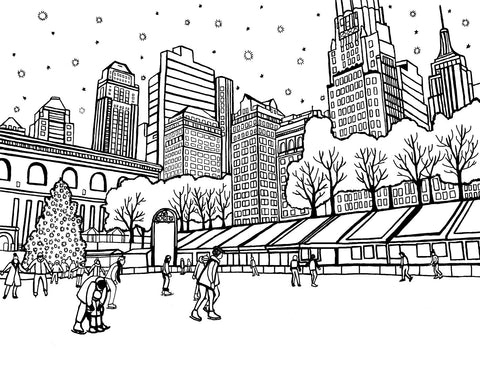

Dutch Windmill, The Netherlands - Free Coloring Page
Dutch Windmill
The Netherlands is renowned for its historic windmills, which have stood as a symbol of Dutch ingenuity in managing water levels since the 16th century. These iconic structures are special not only for their role in draining wetlands to create arable land but also for their picturesque charm that dots the Dutch landscape, offering a glimpse into the past and the country's enduring relationship with nature.Did you know?
An unusual story about Dutch windmills is that during the 1950s, a network of these windmills famously worked in concert to prevent a flood in the region of Holland. In a coordinated effort that showcased the effectiveness of historical practices, the windmills were activated simultaneously, showcasing a traditional method of water management that was both effective and sustainable.For enthusiasts looking to dive deeper into artistic exploration, we offer 2 books:
The Netherlands Magical Places Book (coloring/reading) and the Living in Amsterdam Book (also coloring and reading) .
If you want to read more about these magnificient Dutch Windmills, the Netherlands's Heritage, read on! It might help you be inspired to apply different colors after understanding more about this historical engineering. Remember that the dutch are masters at water management, and this gives this beautiful country, it's unique iconic landscapes.
Dutch Windmills: Masters of the Wind and Time
Nestled in the picturesque landscapes of the Netherlands, Dutch windmills stand as iconic symbols of the country's rich history and innovative spirit. These towering structures have captivated the imagination for centuries, and their story is one of resilience, innovation, and a deep connection to the Dutch way of life. Coloring this windmill will help you appreciate the engineering behind these life saving monuments.
A History Rooted in Necessity
The history of Dutch windmills dates back to the late 16th century, during a time when the Low Countries were grappling with the ever-encroaching North Sea. With much of the Dutch terrain situated below sea level, the threat of flooding was a constant menace. To combat this natural adversary, the Dutch ingeniously turned to windmills as a solution.
Pumping the Land Dry
The primary purpose of these windmills was to pump water from the low-lying polders, or reclaimed land areas, into higher canals or rivers. This drainage allowed the Dutch to reclaim vast expanses of land from the sea, making it suitable for agriculture and habitation. As a result, windmills played a pivotal role in expanding the available living space in the Netherlands and ensuring the country's survival in the face of rising waters.
Beyond Drainage: Versatile Machines
While drainage was their primary function, Dutch windmills proved to be remarkably versatile. Over time, they were adapted for various purposes, showcasing the Dutch penchant for innovation. Some windmills were used to grind grains, helping to sustain the population with freshly milled flour. Others served as sawmills, transforming logs into lumber for construction. The adaptability of windmills made them indispensable to Dutch industry and agriculture.
Design and Mechanics
Dutch windmills are renowned for their distinctive design. The most common type is the "tower mill," featuring a tall, slender tower with a thatched or tiled roof. These mills typically had wooden sails covered in canvas, which could be adjusted to catch the wind at different angles. The "scoop wheel" mechanism inside the mill, powered by the wind, would lift water from the polder and discharge it into the higher waterways.
Windmill Communities
Windmills were often clustered together in groups, creating charming windmill villages. These communities of mills were strategically positioned to harness the prevailing winds, ensuring efficient drainage and milling operations. Some of the most famous windmill villages include Kinderdijk and Zaanse Schans, both of which have become popular tourist destinations, offering a glimpse into the Dutch heritage and craftsmanship.
Enduring Symbols
Today, Dutch windmills remain not only functional but also emblematic of the Netherlands. They are a testament to the Dutch mastery over water and their ability to harness the forces of nature for their benefit. While modern technology has taken over many of the tasks once handled by windmills, these historic structures continue to evoke a sense of wonder and nostalgia.
In a world driven by innovation, Dutch windmills stand as a reminder of the past, a link to a time when human ingenuity and determination conquered the elements. They are more than just machines; they are a reflection of the Dutch spirit and their enduring connection to the land and water that define their nation.
Visiting the Netherlands is not complete without experiencing the majesty and history of these iconic Dutch windmills, a living testament to the enduring human quest to shape the world around us. This free coloring page can be created with your own colors and become unique to you.




